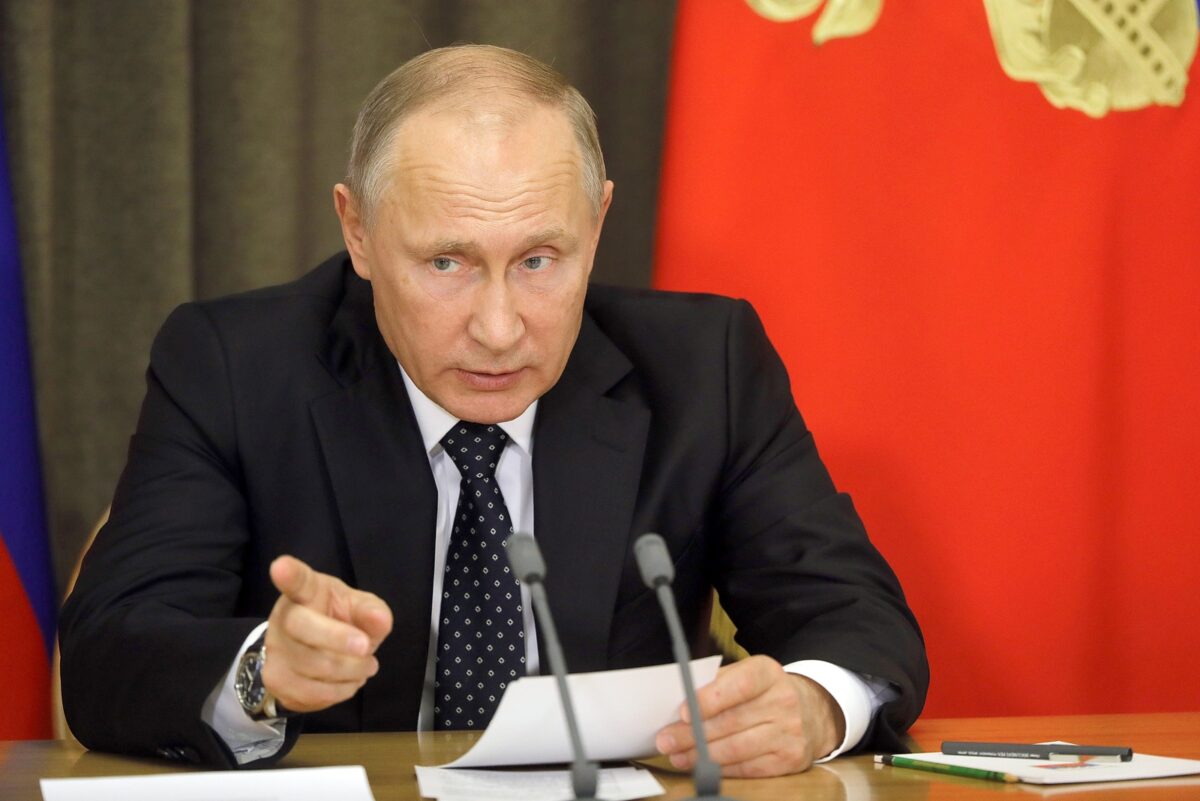On June 14, Russian leader Vladimir Putin publicly outlined his own peace plan to end his invasion of Ukraine in what he describes as “realistic” terms, as opposed to Ukrainian dreams of restoring its 1991 borders.
The statement was made in Moscow at the Russian foreign ministry, right on the eve of the Ukrainian peace summit this weekend in Switzerland, a country known for its long-term historical neutrality, while also an example of a proper European democracy.
In substance, Putin wants Ukraine to withdraw all of its troops from the Donetsk, Luhansk, Kherson and Zaporizhzhia regions. He didn’t mention Crimea, which means he won’t be even discussing giving it back in Ukraine, whatever the final deal might look like—if a deal is made at all. On the presence of Russian troops in Kharkiv and Sumy regions, Putin again said nothing.
In return, Russia would immediately halt combat operations, while also guaranteeing the safe withdrawal of Ukrainian forces from the occupied regions. Putin says this is not a ceasefire, but the end of the war per se.
No deal on Putin’s terms
What we in fact see here is Putin being crystal clear about what he wants and by offering such clear terms he is seeking global support. He’s trying to show that Ukrainian diplomacy has failed to present a realistic vision for ending the war, while Russian diplomacy does directly that.
Indeed, Ukrainian President Volodymyr Zelensky does not plan to offer a realistic peace treaty in Switzerland—he merely wants to show that Kyiv needs support for further potential counter-offensive operations in 2024-25. Dozens of times Zelensky has implied that he isn’t seeking peace on conditions that will be acceptable to Putin and that he doesn’t see any opportunity to make a deal with Putin.
Public opinion in Ukraine on these issues is complicated. If you go public with statements such as, “Ukraine should cede territories to get peace”, then you might be accused of violating Ukrainian constitution, which is a criminal offence, and could, if backed by a court, lead to a prison sentence. That’s why nobody says this publicly, but privately people do talk about such ideas.
“I don’t care about war anymore, just give those territories to Putin and let him die digesting them”. This is what, most likely, an ordinary Joe would tell you on the streets of Kyiv. But ordinary Joe isn’t the president of Ukraine, neither he is a top general or a soldier at all. Ordinary Joe can’t even vote right now, because elections are on hold until the end of war, so his opinion doesn’t have a stake in the political process in Ukraine anymore.
Ukraine has turned off many of the democratic procedures during war, allowing President Zelensky to enjoy as much power as he needs—the assumption being that doing so will somehow end up with Ukraine winning the war, sooner or later. So it doesn’t really matter what ordinary Joe thinks—it only matters what Zelensky thinks. That’s why it’s so important who Zelensky’s aides and advisors are, and what motivations they have.
Lessons from history
There are two important historical examples which allow us to think in an original way about what’s really happening and why war diplomacy is so crazily complicated, with no potential deal in sight, despite the multiple daily tragedies that the war brings.
The first example would be the war between the Soviet Union and Finland from 1939-40—for some time seen as a scenario which could be applied to today’s Ukraine-Russia war.
Then, after months of successful fighting, Finnish leader Carl Gustaf Mannerheim had to cede parts of Finland’s territory to the Soviet Union, after evacuating the civilian population to other parts of Finland. Helsinki did not enjoy as much international support as Ukraine does now, so this outcome—preserving the country by losing up to 10 per cent of its territory—is largely seen by historians as a Finnish success.
There are many people across the globe who believe that the ‘Finnish option’ could be a model for resolving Ukraine-Russia war. We may think differently, but the philosophy of history teaches us that you can’t ignore forever what people realistically think.
The second example is the so-called Brest peace treaty, signed in February 1918, which allowed Ukraine to enjoy a year of full political independence, right after the Russians tried to occupy our country after the beginning of the communist revolution.
Then, Ukraine made a deal with Germany and Austria-Hungary, whose armies were fighting in World War I. Ukraine pledged to send food supplies to the struggling empires in exchange for their armies helping Ukraine push Russian troops out of the country.
While nominally independent, the Ukrainian government in 1918 couldn’t do much without agreeing each step with German generals, ministers or even directly with German Emperor Wilhelm II in Berlin. The German and Austrian armies were much better fighters than the Russian army was back then, but it’s hard to imagine a deal of this type today. Most of the countries from a global pro-Ukrainian coalition do not support the idea of military intervention in Ukraine to guarantee our country’s freedom and territorial integrity.
And there’s another important argument. While in Brest, the Russian delegation was led by Leon Trotsky—one of the communist leaders tasked with forging the Soviet Union’s military and foreign policy. It was close to impossible to make any deal with him, insisting as he did that Ukraine is a part of Russia and that the topic was not up for discussion.
However, Trotsky was much more agreeable in private conversations, explaining Russian logic to diplomats from Germany, Austria and Ukraine. The same is possibly true today: Russians rarely say publicly what they really think, preferring behind-the-scenes deals that never make the press.
The fighting will go on
Ukrainian President Volodymyr Zelensky wants to keep fighting instead of accepting Vladimir Putin’s peace plan. Zelensky intends to recover all of the occupied Ukrainian territories, and he believes it’s realistic to keep fighting the war until these goals are achieved.
Vladimir Putin knows well that his words about ending the war in Ukraine won’t be taken at face value, so he’s likely preparing several different scenarios just in case. To find out what these are, they will need to be officially requested from Putin himself—and he wants just that to happen. But it’s unlikely anybody from the world’s capitals will be officially asking Putin whether he has more scenarios for ending the war.
The fighting will therefore go on, taking more months and more people’s lives, unfortunately. Russia plans to exhaust Ukraine and make our country desperately poor, while also dark and cold. The Ukrainian government believes that victory will come, but many more resources are needed for such an outcome—and much more time, too.







